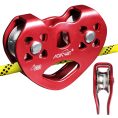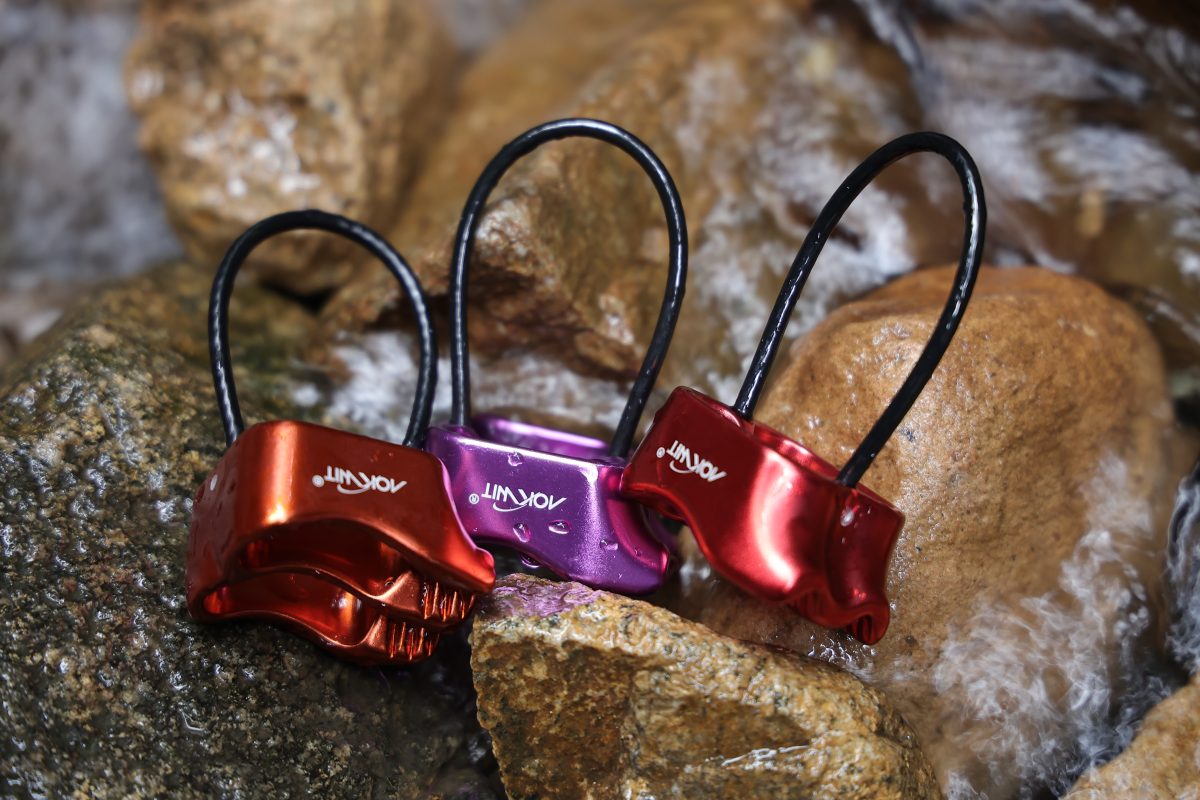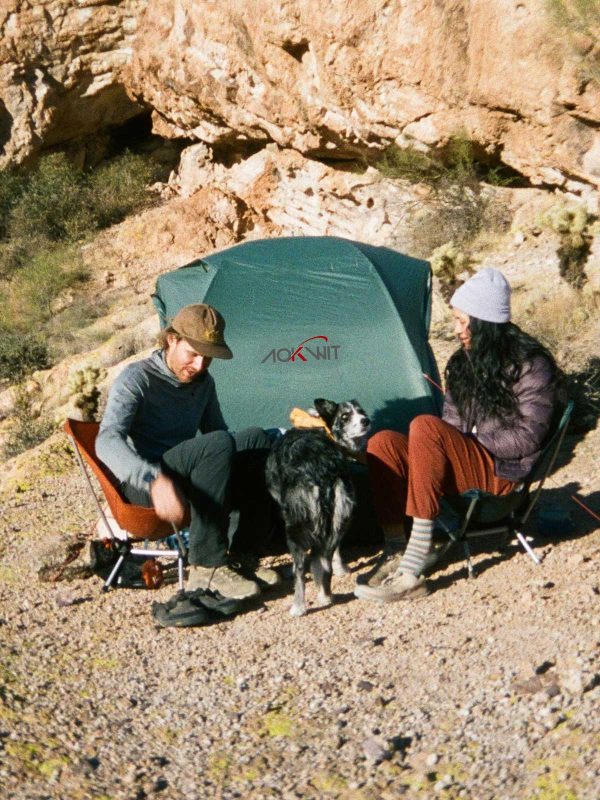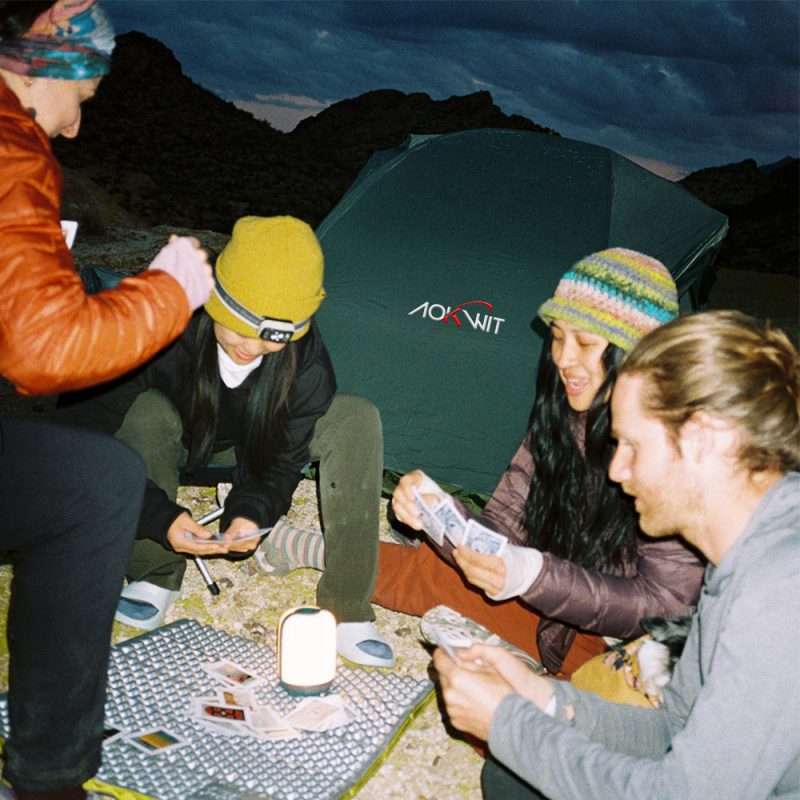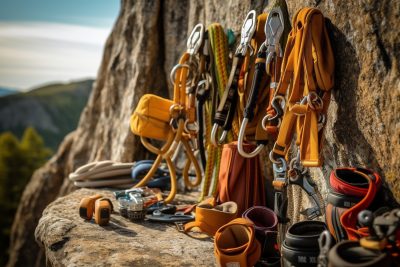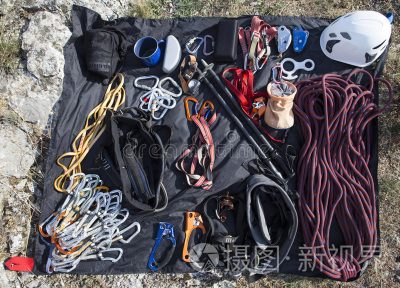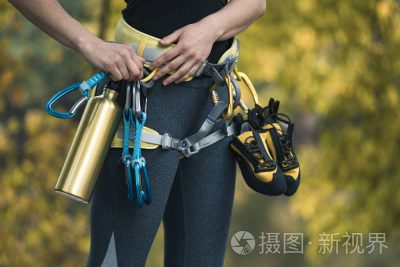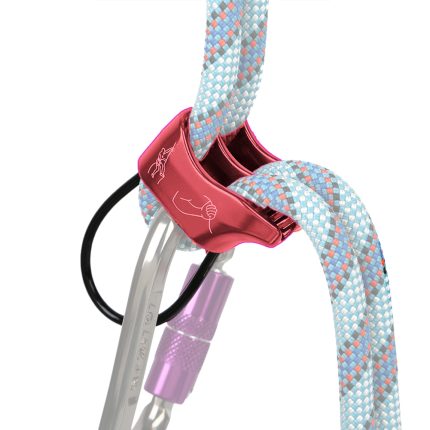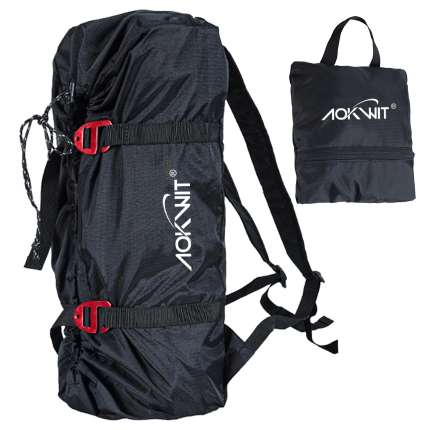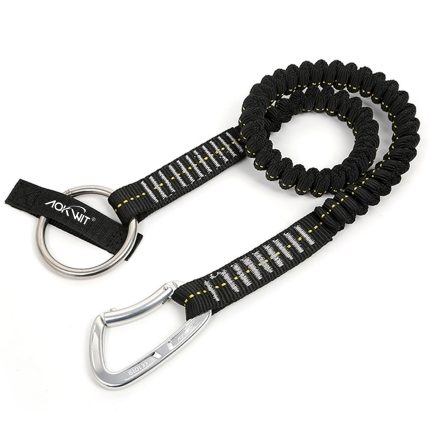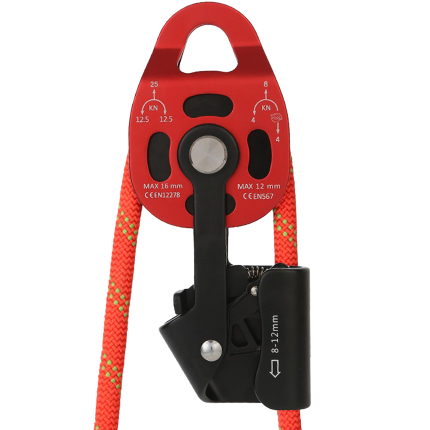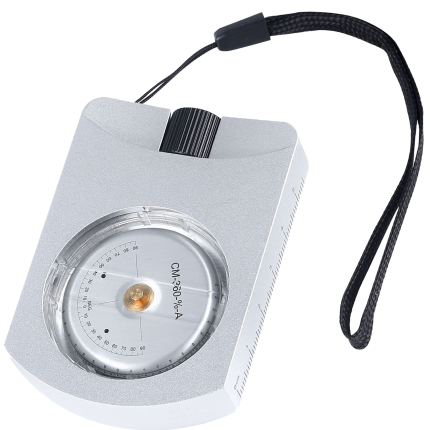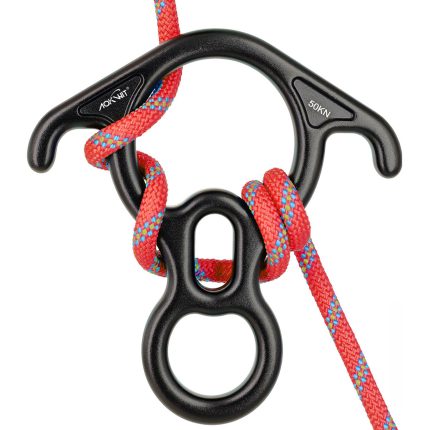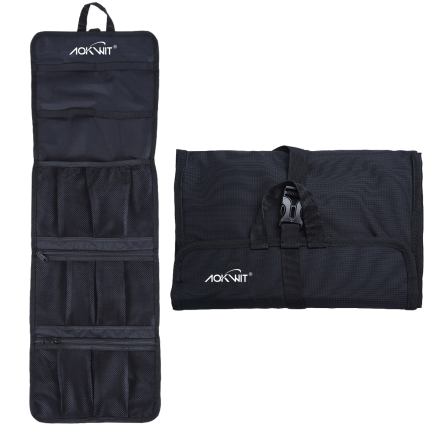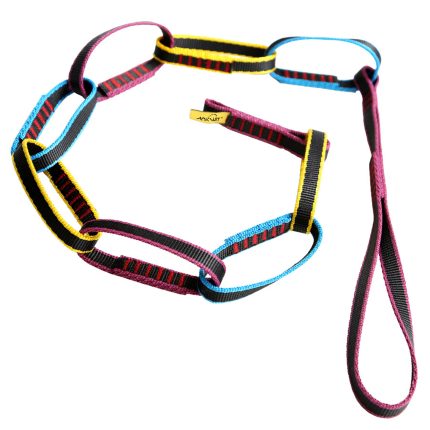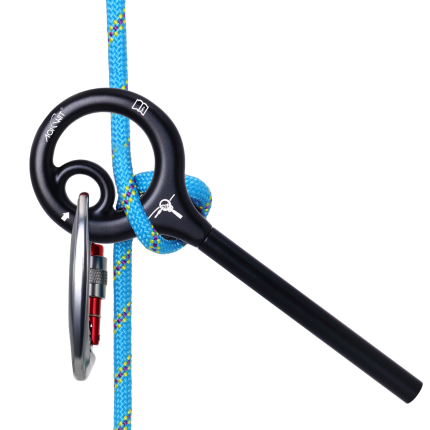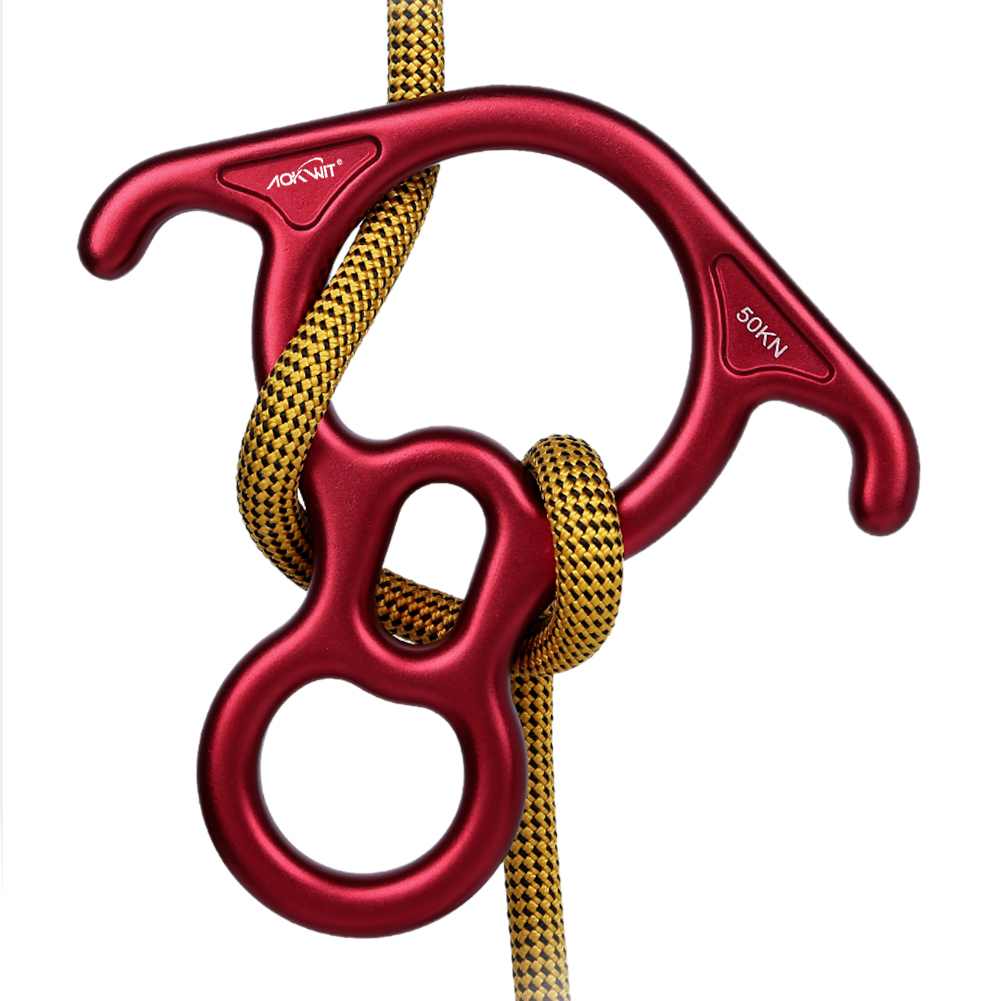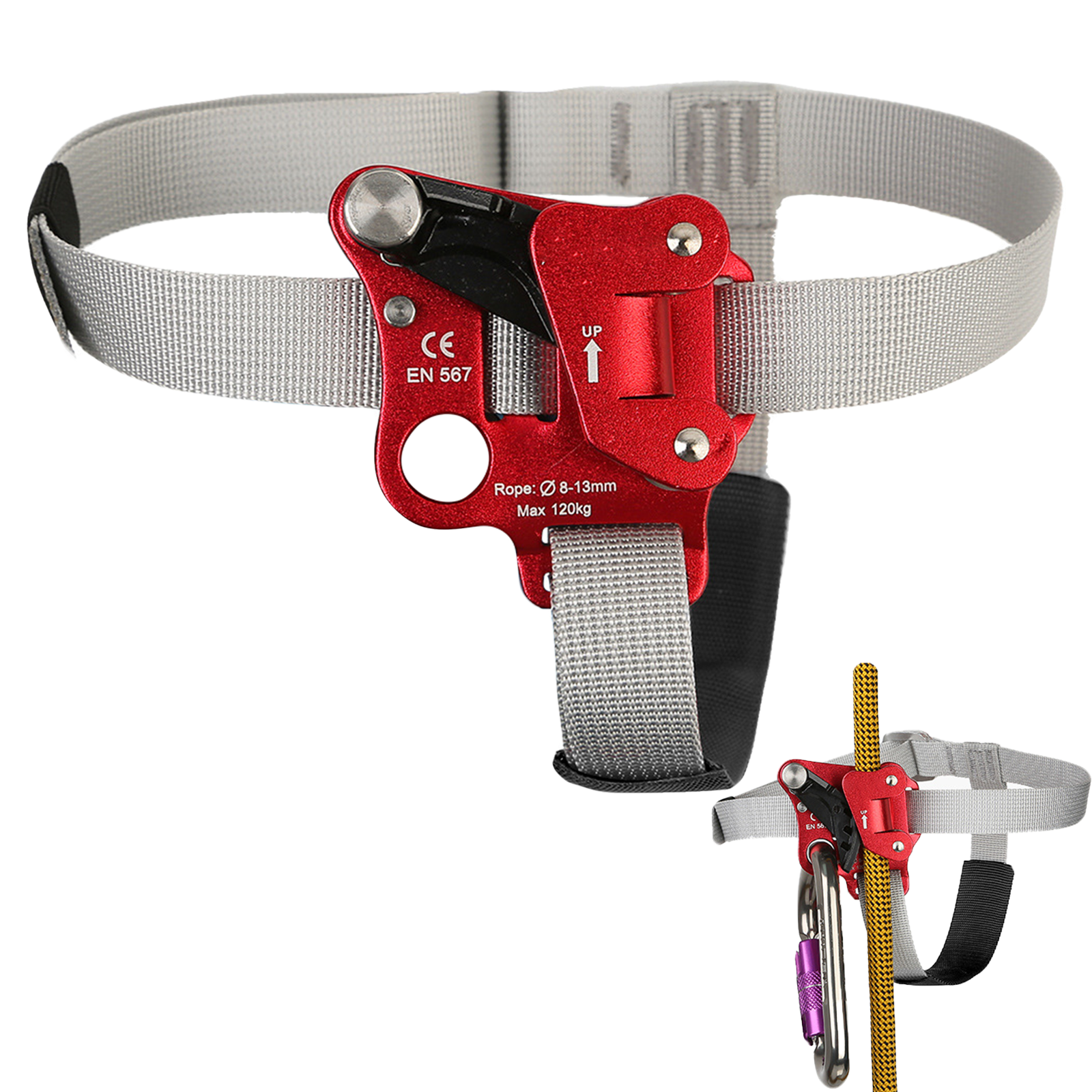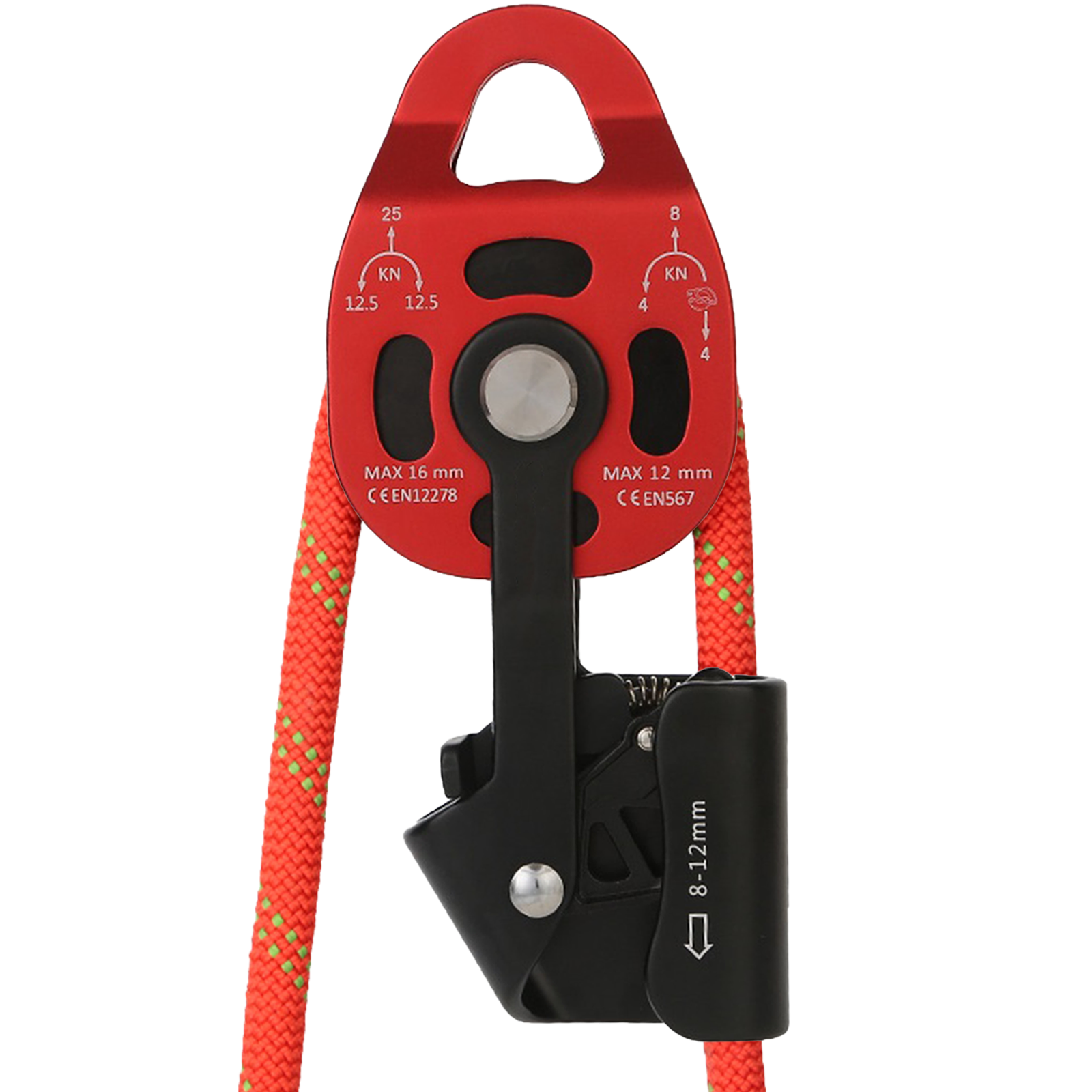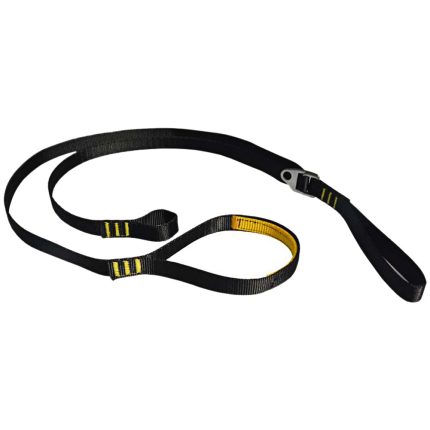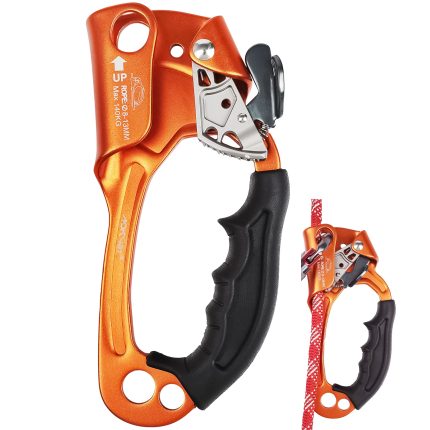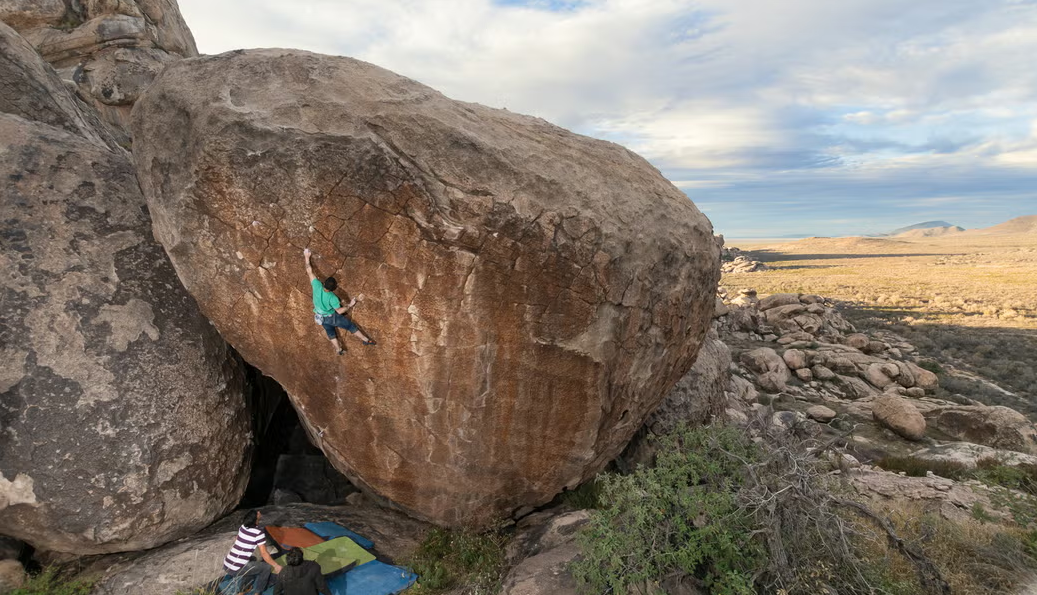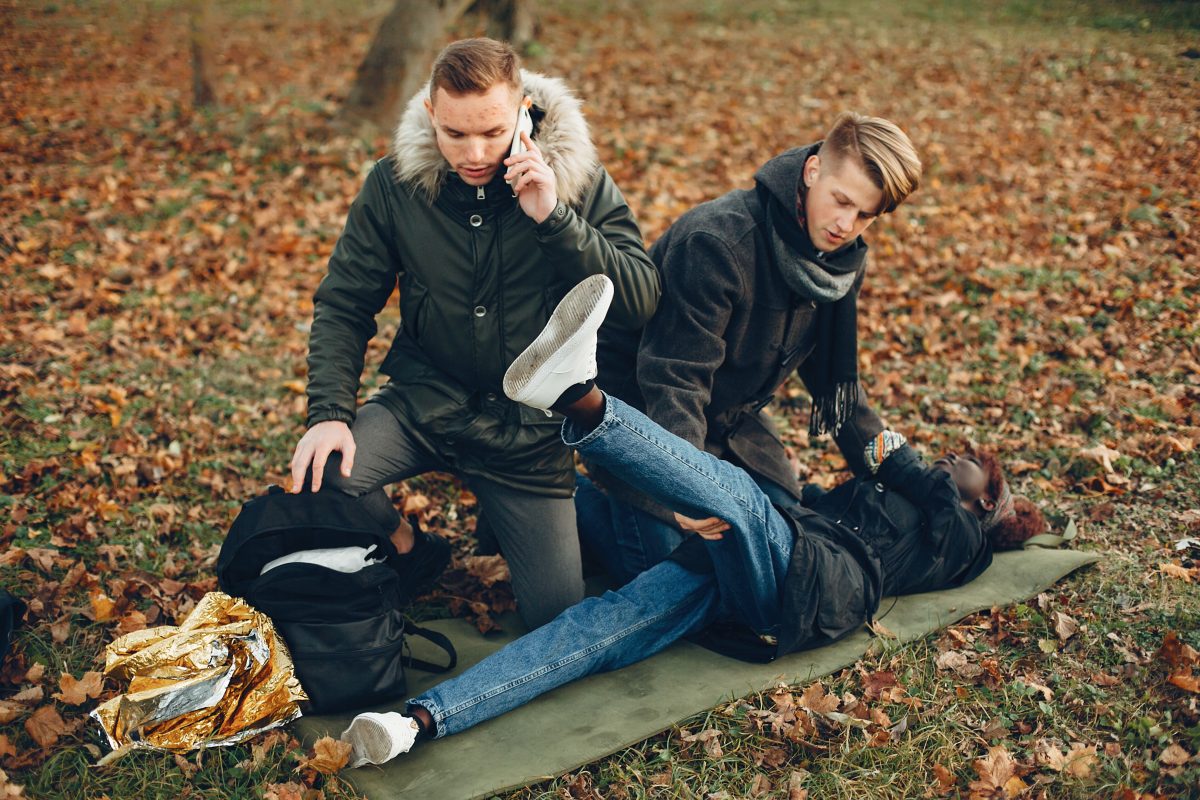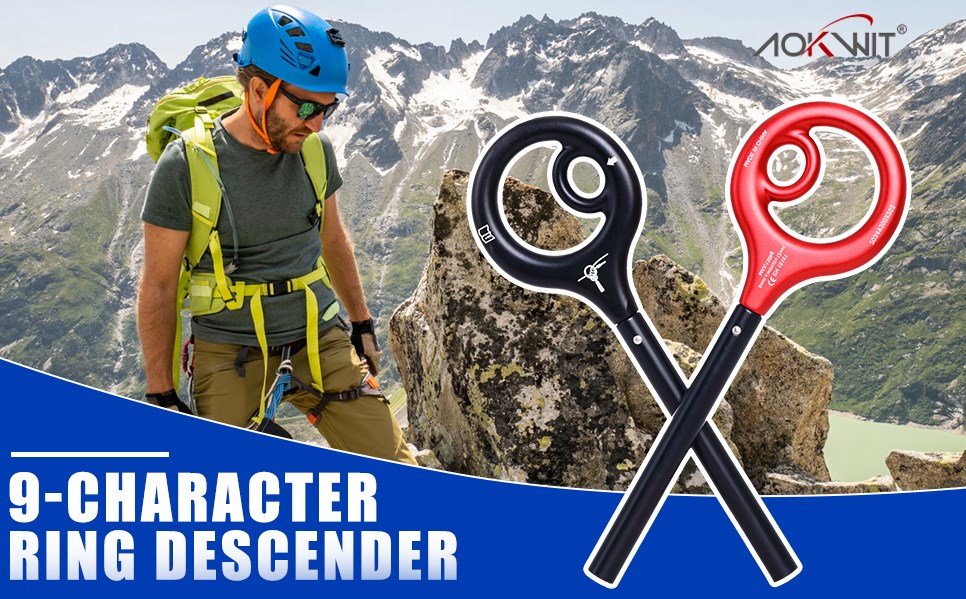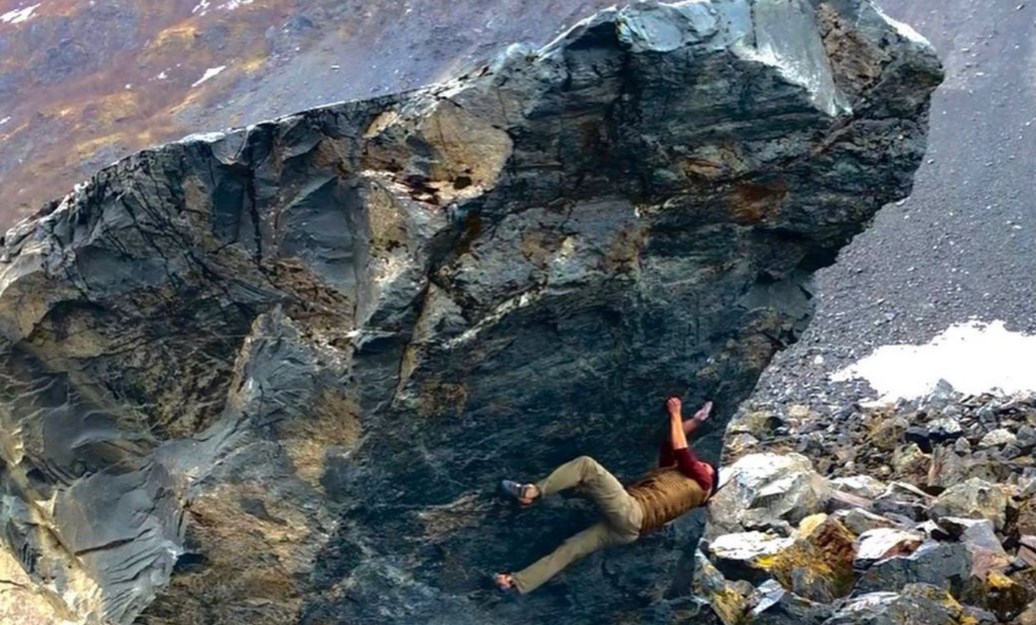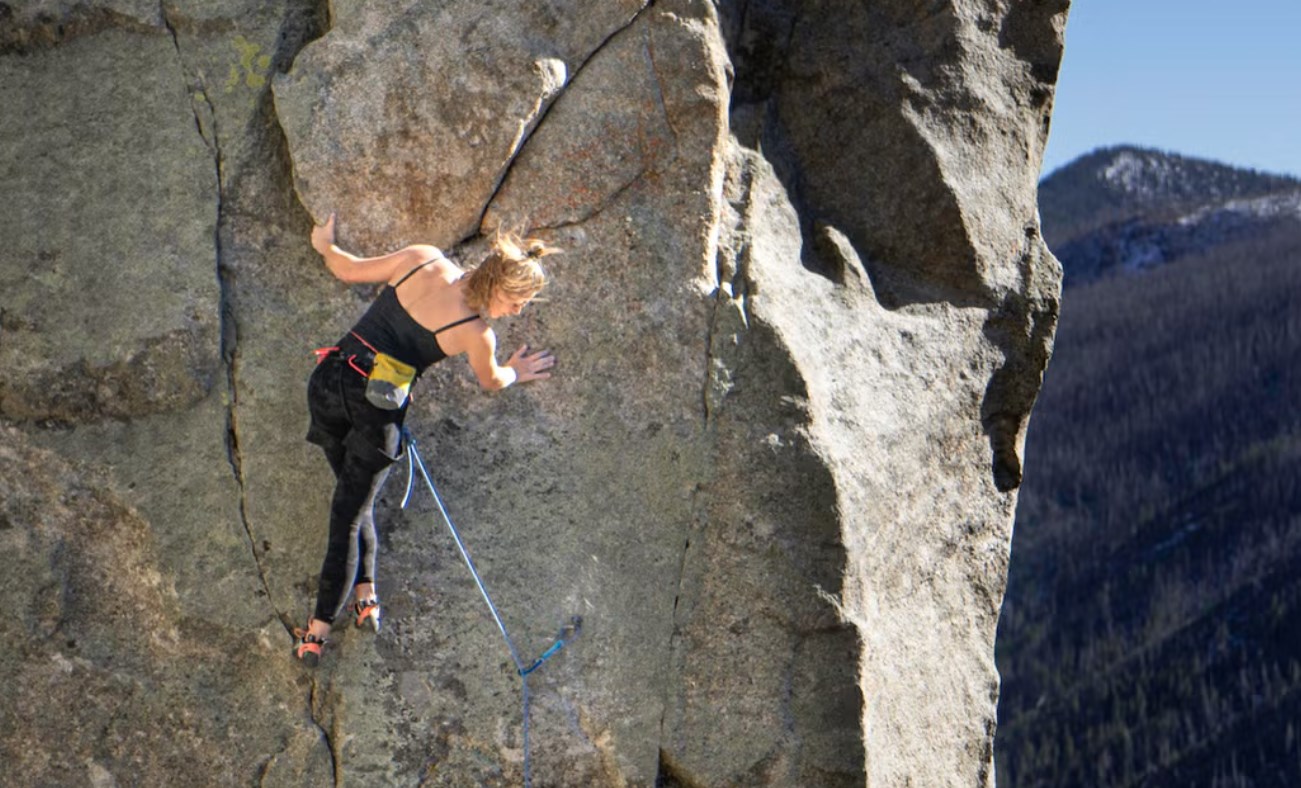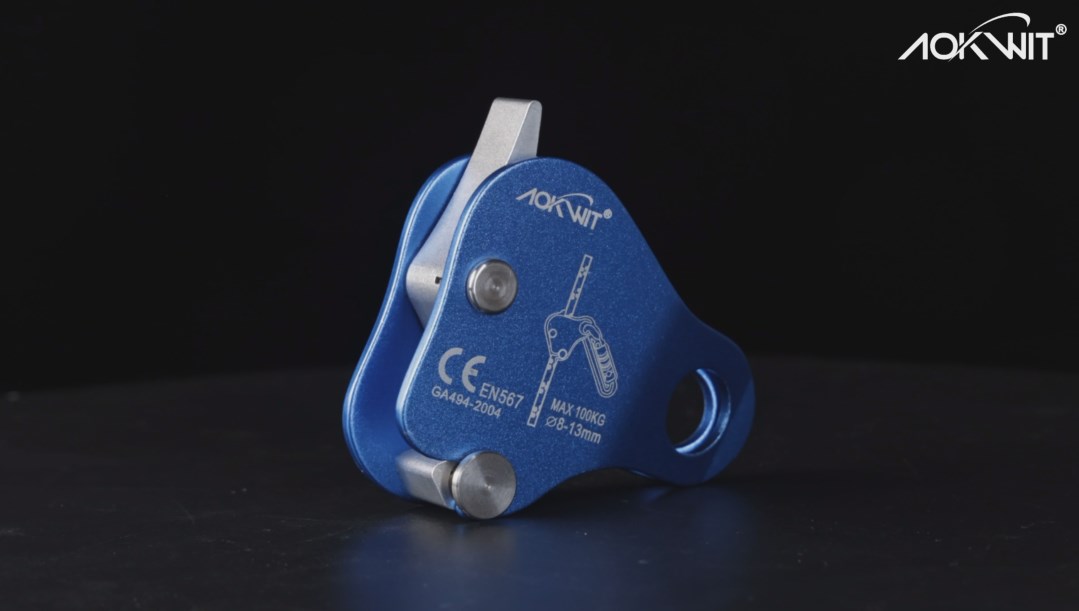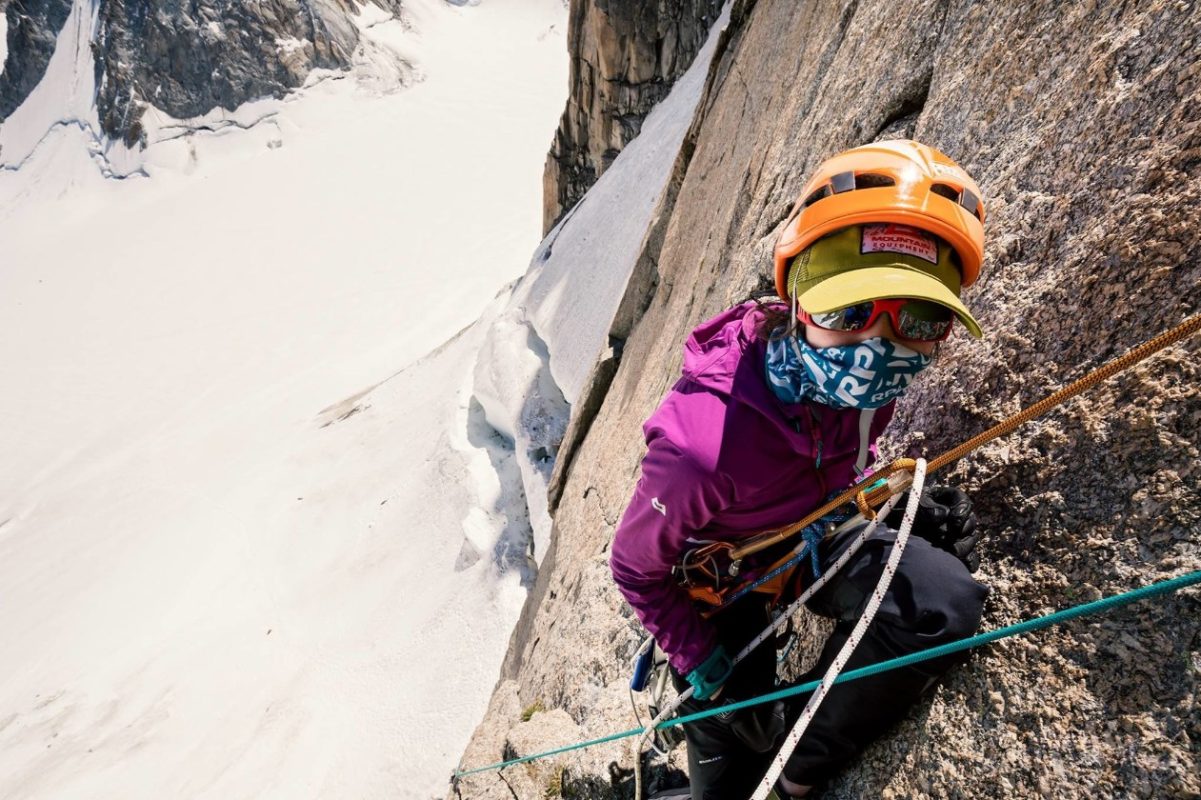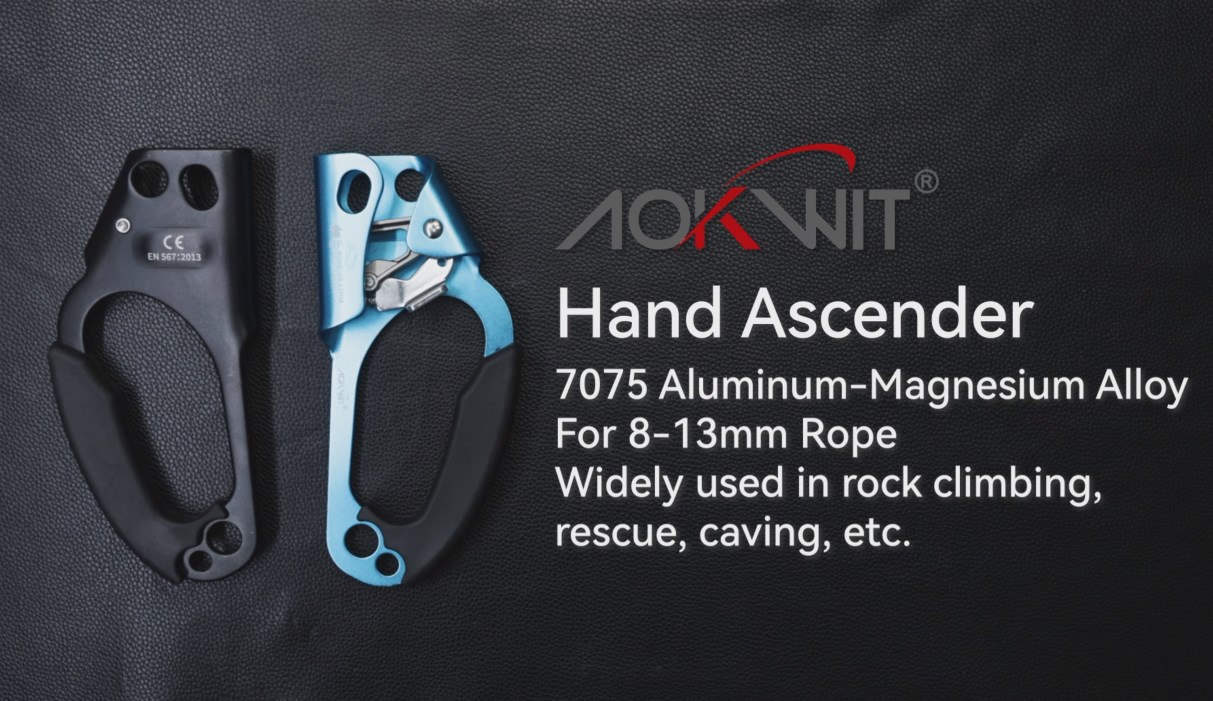Knowledge Related to Climbing Dynamic Ropes

In lead climbing, absorbing a fall is a crucial aspect. The function of cushioning is to gradually dissipate the downward force generated during the fall, not to bring it to an abrupt stop.
Without proper cushioning, the entire body weight concentrates on the harness waist loop (and secondarily on the leg loops) at the moment of impact. This sudden force can injure your lower back and forcefully expel air from your lungs, producing an audible “thud” sound.
Another scenario: when falling on a vertical or overhanging wall, your feet can slam violently into the rock. This subjects the ankles and knee joints to significant impact forces, making injury highly likely. At the moment the feet make contact, the legs should bend to absorb the shock for the knees.
Cushioning is not simply feeding out rope while standing still. The best way to provide cushioning is for the belayer to jump lightly upward with the pull of the rope at the exact moment it comes under tension from the fall.
This generally provides the most appropriate level of cushioning. Effective cushioning can mitigate the danger of many falls, and the climber won’t experience significant discomfort from the fall.
The amount of cushioning provided must be estimated by the belayer based on the actual situation. Below are some common scenarios encountered in outdoor climbing:
1. Climber’s Leg Wrapped Around the Rope
If a fall occurs with the rope wrapped around a leg, the leg is highly susceptible to rope burn or the climber can invert (flip upside down), potentially hitting their head or back on the rock.
When the leader has the rope wrapped around their leg, the belayer should calmly remind them to free their leg.
Avoid shouting loudly, and definitely don’t have a group of people yelling from below. This shouting can increase their panic; someone who might not have fallen could be startled into falling.
On overhangs, if inverted due to a leg wrap, providing extra cushioning usually prevents serious injury.
However, this situation is much more dangerous on vertical walls. If a fall is unavoidable, try to free the leg from the rope just before falling. It is recommended that everyone wears a helmet.
2. Climber Deviates Left or Right from the Route
If a fall occurs here, the climber may swing. In this case, the belayer needs to provide extra cushioning to dissipate the swinging force. Once dissipated, the swing will stop.
3. When the Climber Falls Above a Ledge or Protruding Feature
In this situation, providing less cushioning is often acceptable, as long as the climber doesn’t land on the ledge or impact the protruding object.
Another method is to give out more rope, allowing the climber to fall below the obstacle. However, this technique only works for obstacles that can be cleared by giving extra slack.
For obstacles or ledges that cannot be cleared this way, it’s generally better to keep the rope tighter.
